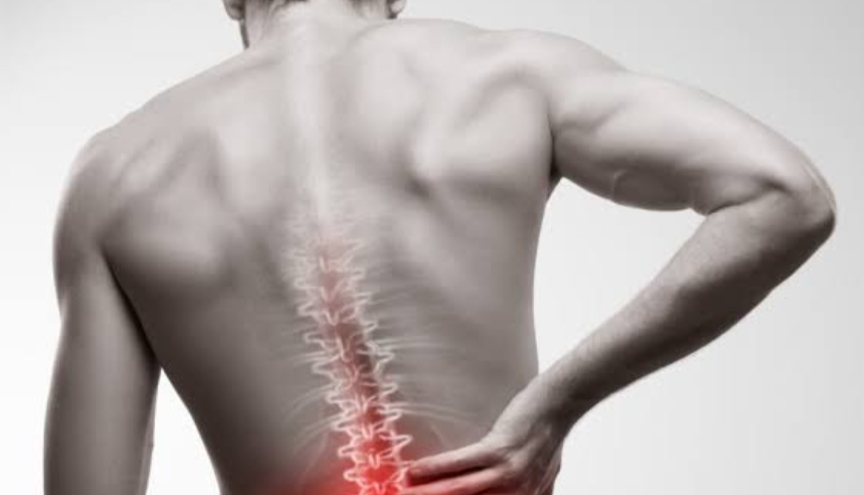
Back Pain Myth
Back pain is a simple and total burden. Many are tired of dealing with it for years and consider costly surgeries and addictive painkillers to manage the problem. What may be happening is that surgery and opioids are not the only options available to people with this condition.
Believing that quality education on various back problems can be an effective adjunct to proper treatment, this article dispels some of the most common misconceptions about back problems – common myths, Myths about the diagnosis and causes of back pain, and back problems. The pain, in this case, usually goes away on its own after a few days with conservative treatment, including heat therapy, rest, and over-the-counter medications, you can also consider using 10 in progress.
Few Myths And Facts Connected With Back Pain Relief
Myth #1 : The best cure for back pain is bed rest!
Fact: Prolonged rest for more than a day or two can make back pain worse. Back muscles can become weak and stiff with prolonged inactivity. In addition, constant lying in bed can cause emotional stress and depression.
Myth #2 : Physically active people don’t suffer from back pain!
Fact: Back pain can affect everyone, regardless of activity level. However, physically active people and in good shape are indeed less likely to suffer from back pain than those who lead a sedentary lifestyle.
Myth #3 : Aging causes back pain
Fact: Indeed, degeneration of the spine and its components is a natural part of aging. Aging can make you more prone to certain painful back conditions, but they are not necessarily painful. Back pain is most common between the ages of 35 and 55. People of all ages should see a doctor if they are suffering from back pain and their quality of life is declining.
Myth #4 : I’m addicted to painkillers!
Fact: Not all types of pain relievers are addictive. Nonsteroidal anti-inflammatory drugs (NSAIDs) are recommended as first-line back pain treatment. Patients may require more potent pain relievers in some cases of chronic back pain. A well-defined treatment plan for back pain relief and close monitoring can reduce the risk of dependence and addiction from using such drugs. It is better to do it under care.
Myth #5 : Back pain only gets better after surgery!
Fact: Most cases of back pain improve without treatment with conservative treatments such as NSAIDs, physical therapy, and exercise. Surgery should only be considered a last resort after all conservative treatments have been exhausted.
Myth #6 : Back pain does not occur to me!
Fact: Back pain is common. About 8 out of 10 people will experience back pain at some point. Back pain is:
- The most common cause of disability under age 45.
- It accounts for about 15% of all sick leave.
- The second most common reason for seeing a doctor.
Physical Therapy For Back Pain Relief
Before considering physical therapy, let’s assume the causes of back pain. The root cause may be something as small as a Poor sitting position or sudden movements that can cause sprains. The pain, in this case, usually goes away on its own after a few days with conservative treatment, including heat therapy, rest, and over-the-counter medications.
However, if the pain is chronic or worsening, it may indicate a more serious medical condition such as arthritis, kidney infection, disc herniation, intestinal problems, or even cancer.
Benefits of Physical Therapy
-
Personal Care
One of the main benefits of seeking physical therapy helps is that they do not take a one-size-fits-all approach. They will consider your body type, age, lifestyle (usually if you are a sedentary person or an athlete), pre-existing health conditions, and how you respond to different types of movement.
-
Decreased Pain
Low-pain physical therapy looks at not only gait (the movement that occurs when walking or running) but also rising from a sitting or lying position. It allows you to suggest exercises that reduce the pain directly caused by your movement. Therapists may also use electrical stimulation to restore function.
-
Mobility Restored
Physiotherapists look for the cause of discomfort rather than just treating pain. For example, if you have a stiff lower back, your therapist will focus on relieving that stiffness. If you have weak back muscles, your therapist can recommend strengthening exercises to help you regain your full range of motion. It can eliminate the need for surgery. Surgery should be considered only as a last resort, and physical therapy is one of the most aggressive ways to address back pain conservatively.
-
Reduces risk of further injury
If your work or sporting activity requires you to perform repetitive movements, your physical therapist will consider such movements and suggest recovery stretches to help prevent future back injuries.
-
Reduce the risk of falls
If you have poor posture or a degenerative disorder that makes you prone to falls, your physical therapist will make a plan to improve your balance and coordination.
Conclusion
It is fully customizable, so every treatment plan is tailored to your needs, including symptoms, medical history, lifestyle, and other factors. Regular visits to your physical therapist and doctor can ensure that your treatment plan is always aligned with your needs, goals, and recovery. If you want to know about physical therapy for back pain relief. Contact your nearest PT clinic such as nw portland have Rose City Physical Therapy. As their local clinic. Request an appointment now.
